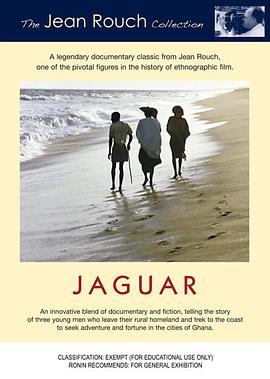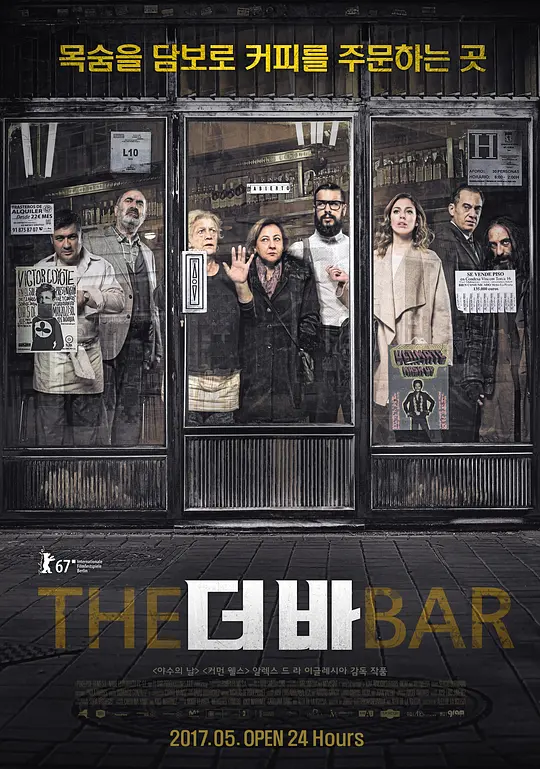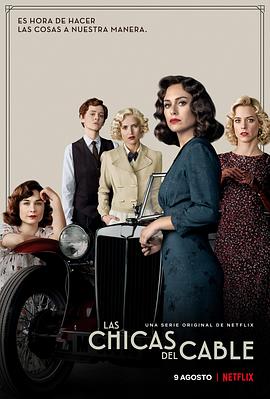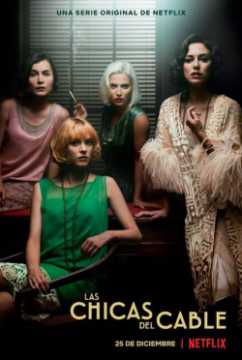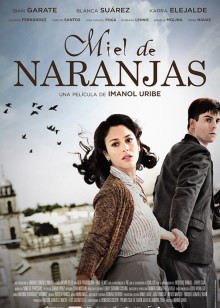美洲豹剧情简介
Three young men from the Savannah of Niger leave their homeland to seek wealth and adventure on the coast and in the cities of Ghana. This film is the story of their travels, their encounters along the way, their experiences in Accra and Kumasi, and, after three months, their return to their families and friends at home. The film is part documentary, part fiction, and part refl... (展开全部) Three young men from the Savannah of Niger leave their homeland to seek wealth and adventure on the coast and in the cities of Ghana. This film is the story of their travels, their encounters along the way, their experiences in Accra and Kumasi, and, after three months, their return to their families and friends at home. The film is part documentary, part fiction, and part reflective commentary. There was no portable sound synchronized equipment in the early 1950s when Jaguar was shot. Instead, Rouch had the main characters (his friends and accomplices) improvise a narrative while they viewed the film, which was itself improvized along the way. The resulting soundtrack consists of remembered dialogue, of joking and exclamations, of questions and explanations about the action on the screen. Short-term, rural migration to the cities is common to much of contemporary Africa. Here we meet Lam the herdsman, Illo the fisherman and Damoure, their unsettled but literate friend. The three trek for more than a month south through Dahomey to Ghana, crossing the land of the Somba people (whose nudity shocks them), eating coconuts more delicious than cheese, and delighting in the ocean with its waves and starfish. Eventually they part ways. Damoure and Illo go to Accra and Lam to Kumasi, where they find jobs as dockworker, foreman for a lumberman, and cattleherder for a city butcher. Having made their separate journeys, they meet again in Kumasi with a fourth friend, and set up an open-air stall, Petit a Petit, in which they hawk everything from alarm clocks to pictures of Queen Elizabeth. Financially successful but homesick, the friends decide to leave the excitement, turmoil and bewildering complexity of the city to return home to Niger before the rains. Lam rejoins his herd, enriched with a new umbrella and a lance; Illo, magician of the river, catches a hippo and distributes everything he has brought from his journey to his family; and Damoure admires anew the beauty of Niger women. Yet although life in the village resumes as usual, Illo, Lam and Damoure have been jaguars in the city: sophisticated keen young men with fancy hairdos, cigarettes, sunglasses, money, and knowledge of the urban world. The film raises, but does not answer, questions about the meaning of this experience and the transformations it may entail in the lives of the returned youths. Jaguar, Thomas Beidelman has written, does succeed in catch ing the flavor of what it must be like to pass to and from a modern city and a rural village in Africa . . . jaguar could be an eloquent document on the process of social change. The flavor, it might be added, is very gay. Rouch has pointed out that jaguar does not attempt to reveal the misery and pain of the annual migration, or the boredom of village life in the dry season (eight months of the year) when young men, no longer warriors as in the past, have nothing to do. Few men, in actuality, become jaguars in the carefree style of Damoure, Lam, and Illo. For most, the city is a struggle. Yet jaguar is nonetheless a vivid portrayal of the ideal of migration, a fantasy imparted through the improvised actions and spirited commentary of the characters. In this film Rouch has developed a form one might call ethnographic fantasy, with an authenticity and reality as important, although quite different, from that of Rouchs own monograph on rural migration to Accra.
七马网为您提供了包括最新电影排行榜,还同时提供了电视剧排行榜电影电视剧以及动画综艺节目的在线观看服务。希望您能喜欢并能收藏我们的网址https://www.7704.la
- 除了"美洲豹"你也可能喜欢以下影片:
- 同主演
- 同导演

